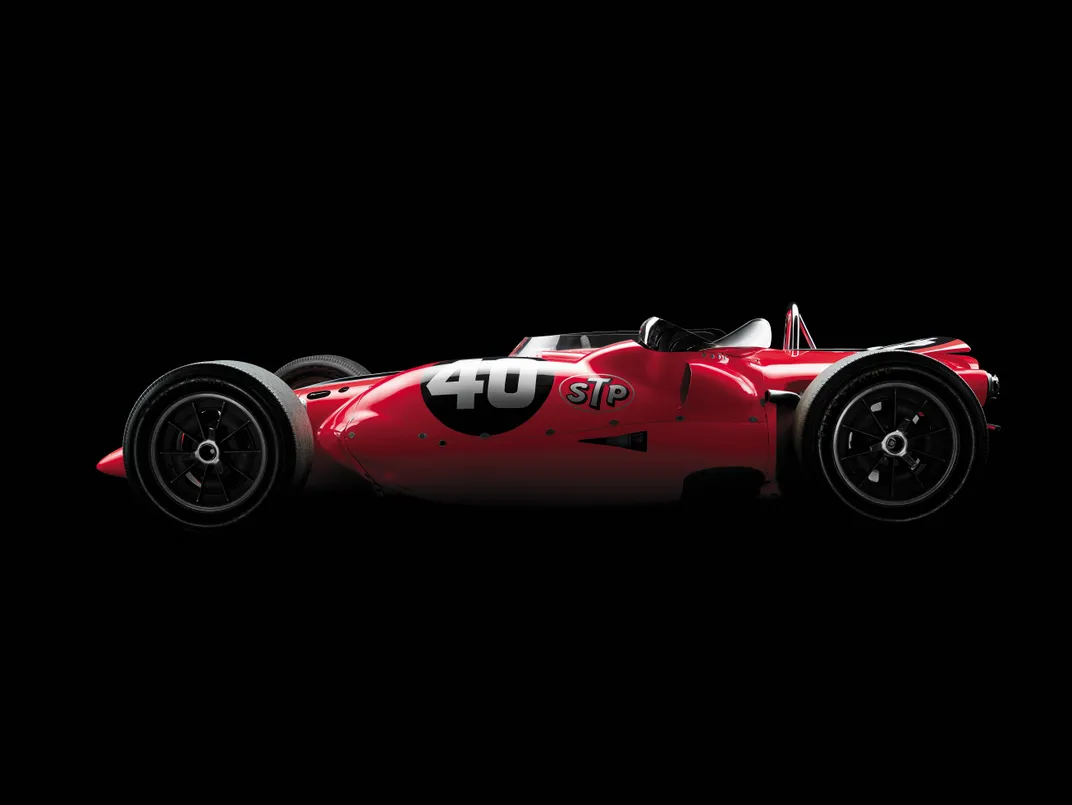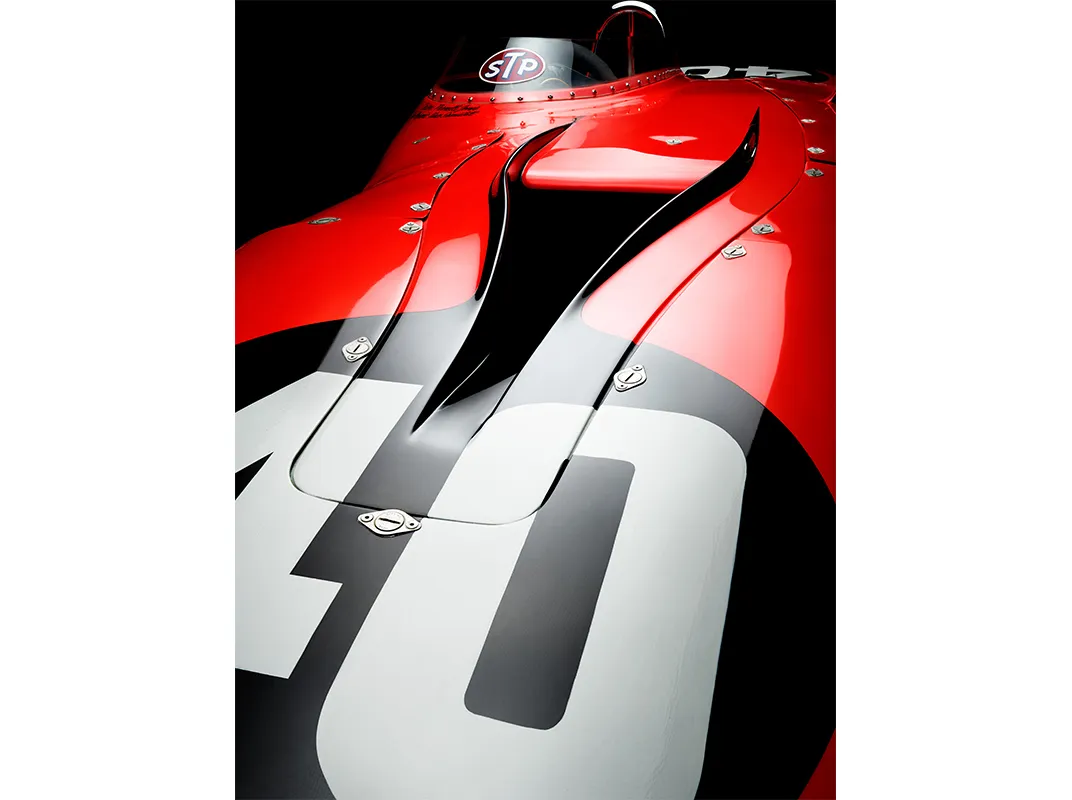When a Jet-Powered Car Raced in the Indianapolis 500
The racecar tore up the track and dazzled fans at the legendary competition—and then vanished
Fifty years ago, the future rolled onto the grid at the Indianapolis 500. That future was low and wide and electric red. It bulged and swooped, beautiful and muscular and fast even standing still. It ran with a whoosh rather than a roar, and it ran away with the race that year until the very moment it did not. Traditionalists at America’s greatest race disdained it, but 10-year-old boys from coast to coast clipped every photo of it we could find.
It is every race car’s odd purpose to transport us, to overwhelm us with outrageous sensation and vicarious thrills. The 1967 STP-Paxton Turbocar did that as well as any race car of the 20th century. For having quickened the nation’s pulse and fired its imagination, it resides in the collections of the Smithsonian National Museum of American History.
Originally designed by engineer Ken Wallis, the jet car concept got the cold shoulder from racing greats Dan Gurney and Carroll Shelby before it found a home with Andy Granatelli. They called Granatelli “Mr. 500.”
A real racer is anyone with the fizz and pop of racing in their blood—a driver, a mechanic or a car owner. Granatelli, engineer, businessman and promotional genius, was a racer, one of the greatest.
The small Pratt & Whitney turbine power plant might have otherwise found itself in a helicopter or a corporate jet. Instead it sat side by side with driver Parnelli Jones. It produced more than 550 horsepower delivered through an innovative all-wheel-drive system. “People forget how well it handled,” Jones says now, but what people talked about and fought over was the smooth, linear power it made.
Indianapolis Motor Speedway historian Donald Davidson remembers standing on the veranda of the old Pagoda (the multitiered front-stretch scoring stand) watching the first lap. “Jones was so far in front,” Davidson recalls, “just a huge lead, and the car was painted Day-Glo red or fluorescent orange or whatever you want to call it. That paint! It actually hurt the eyeballs to look at it. As Parnelli came by, you heard the whoosh and he lifted his right hand off the steering wheel and did a finger and thumb OK sign. Just a finger and thumb up in the air, probably to say ‘Hey it’s beautiful.’”
Jones built an insurmountable lead—until a $6 transmission bearing burned up with three laps to go. Jones coasted to the pit entrance while friend and rival A.J. Foyt went on to win. The crew pushed the broken jet car behind the wall. “It hurt Granatelli worse than it hurt me,” Jones says now. The part may have broken when he accelerated away from the final pit stop. “I went too hard. I still blame myself. But you’re a racer—it’s hard to do something less than full-bore.”
Jones started sixth and finished sixth on May 31, 1967. The next day the Beatles released Sgt. Pepper’s Lonely Hearts Club Band and another overthrow began.
The following year, an STP-Lotus collaboration produced jet turbine cars for the Indy 500. Again the cars dominated—and failed within sight of the finish. In 1969, Granatelli won the 500, running a conventional car. By 1970, restrictions on air volumes and drivetrains had effectively legislated the jet cars out of the race. With their throttle lag they were poorly suited to other tracks and other kinds of racing, and what had looked like a technological inevitability became instead a curiosity, a crazy Day-Glo moment in racing history.
Half a century ago that Granatelli jet car carried Parnelli Jones and me far and fast into a future that never got here.
My own future, whatever it holds, is nearer now than ever, but that car transports me still.
Related Reads

The Indianapolis 500: A Century of Excitement
/https://tf-cmsv2-smithsonianmag-media.s3.amazonaws.com/accounts/headshot/Jeff_MacGregor2_thumbnail.png)




/https://tf-cmsv2-smithsonianmag-media.s3.amazonaws.com/accounts/headshot/Jeff_MacGregor2_thumbnail.png)